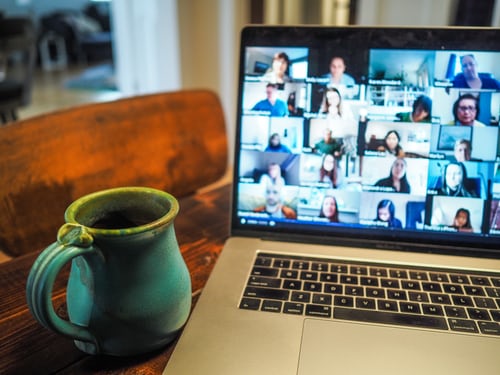Are you the person who makes all the background noise, forcing everyone else to turn down their volume?
Or are you the silent lurker, with the video feed and microphone switched off until you are called upon?
When Covid-19 forced us to work from home, video conferencing soon became an everyday necessity – and it is here to stay.
Over the past six months, the Cicada team has used video calling almost every day to stay in touch with colleagues, clients, family and friends. It’s a poor substitute for meeting in person – conversations don’t flow so easily online – but it’s the next best thing for now.
We’ve found that WhatsApp is great for small groups to have ad-hoc voice or video calls on mobiles. Teams has become our go-to platform for more formal meetings.
Zoom sits somewhere between these two – offering an excellent video calling experience as long as you don’t all speak at once (especially if you know someone who has got a paid subscription so you don’t get cut off after 40 minutes!)
Here are five things that we’re still learning about video calls.
• Make sure the technology works
Sounds obvious but, if you’ve got an important client meeting on an unfamiliar video platform, have a run-through with a colleague first.
You don’t want to be that person who sheepishly appears 15 minutes into a call, making excuses for their patchy wifi.
• What’s the best view?
Do you like a ‘gallery view’ of all participants in a meeting or do you prefer to only see the person currently speaking?
It’s an unusual experience to have your own image staring back at you from the screen. In real life, when you talk to someone, you don’t also see yourself next to them! For this reason, the ‘speaker view’ option can offer a more natural experience.
• To mute or not to mute?
It is usual for the meeting host to ask participants in a larger meeting to mute their microphones to avoid a cacophony of background noise.
Some attendees will go further still and turn off their camera throughout a meeting, their initials on screen the only visible sign that they are present.
It makes you wonder what the video and sound muters are up to during the meeting, which brings us on to our next point…
• What to wear
First up, you’re only visible from the waist up in most video calls so shorts, pyjama bottoms, flip-flops and slippers are all good.
As for any face-to-face meeting, we try to dress for the occasion and reflect the people we’re meeting.
• The future
Video calling has gone mainstream and it’s here to stay. We expect to be using video calls beyond the dark days of Covid.
The pandemic has made us all question the need for some face-to-face meetings, especially where travel is involved. So much time can be saved and it’s much better for the planet.
Despite that, in person meetings will always be important for building relationships, teamwork and fresh thinking.
On the flipside, you do have to wear proper trousers.





